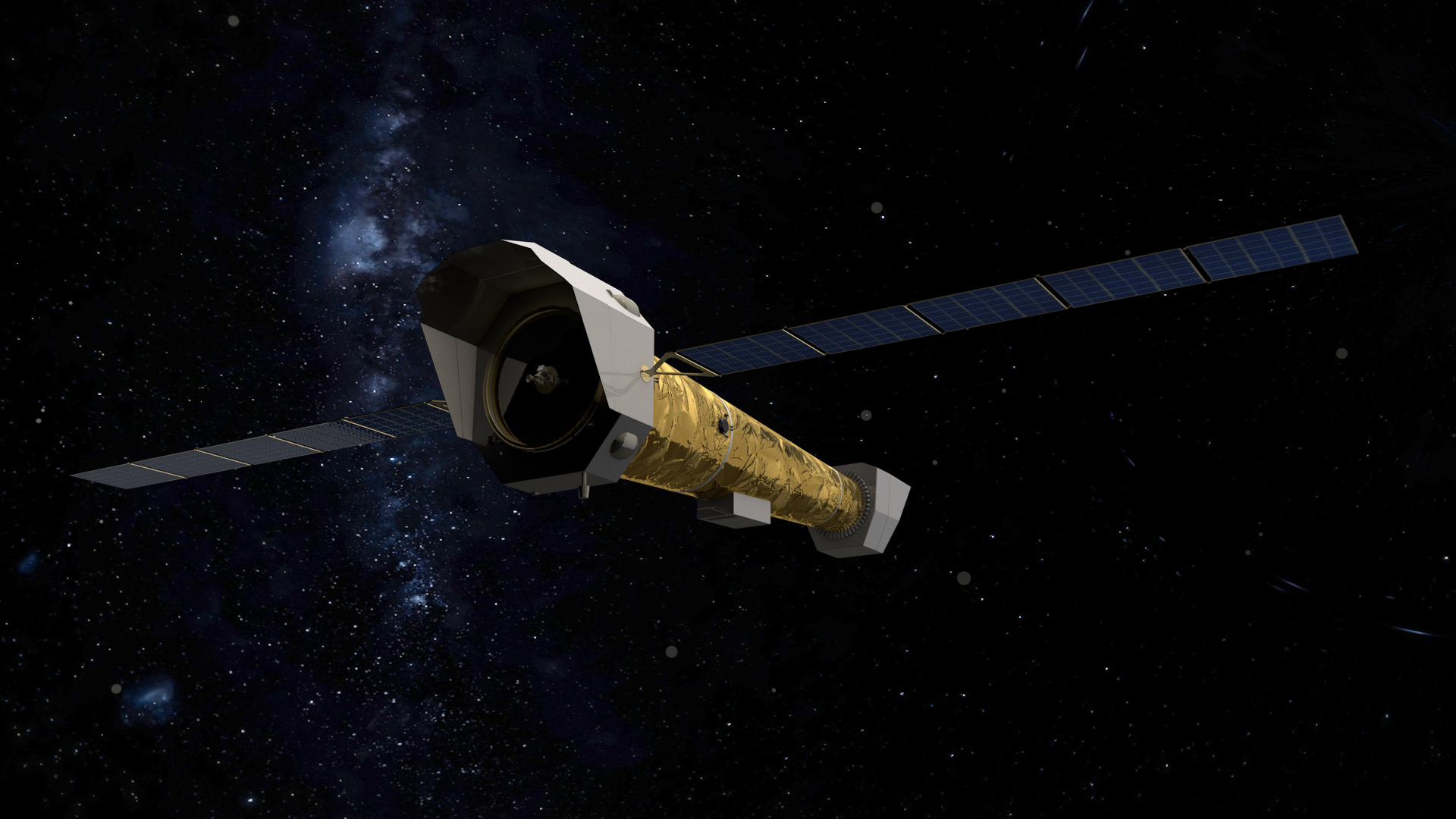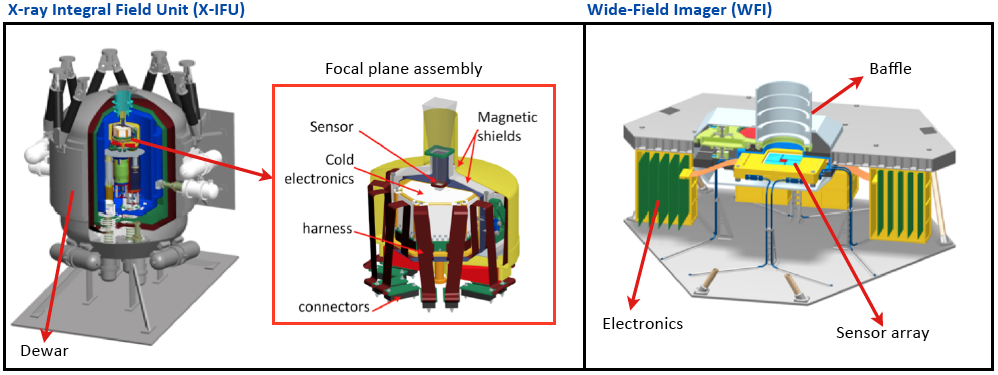

The Athena X-ray observatory is the third large mission (L3) of ESA’s Cosmic Vision-programme. Athena is scheduled to launch in the mid-2030s. The space telescope will answer two big scientific questions: How does ordinary matter glue together to form large-scale structures such as the Milky Way and clusters of galaxies? And how do black holes grow and influence their surroundings?
Athena will observe the hot universe for at least four years. The telescope will carry two instruments: the X-ray Integral Field Unit (X-IFU) spectrometer and the Wide Field Imager (WFI) camera. SRON is co-Principal Investigator for X-IFU. Our hardware contribution to X-IFU is the focal plane assembly including its cold electronics. SRON also carries out the parallel development of back-up ultra-sensitive detector arrays for X-IFU.
To answer the two big scientific questions mentioned above, Athena will map and study large-scale gas structures in the Universe and survey supermassive black holes and explore high-energy astrophysical events such as supernova explosions and energetic stellar flares.
Science
Athena will map the distribution and content of hot gas clouds within galaxies and galaxy clusters at various distances, so at different points in cosmic history. Astronomers can use those data to understand how these large-scale structures formed and evolved. The bulk of ordinary matter in the Universe comprises hot gas which can only be observed by space-based facilities operating in the X-ray band.
One of the bigger mysteries in astronomy is how supermassive black holes are created. One possibility is that the first generation of stars in the Universe turned into stellar black holes at the end of their life, and eventually grew into the supermassive versions that we see today. Athena will search for these events—supernovae shining bright in X-rays—at distances where the Universe appears to be less than 1 billion years old.
Athena will also study fully grown supermassive black holes as their cosmic feedback is linked with galaxy formation and evolution. Luckily for Athena, their accretion produces X-rays. Athena will look for them at distances where the Universe appears to be between 1.5 and 6 billion years old, to cover the era where star formation and accretion processes were at a peak.
Technology
SRON is one of the leading institutes in the development of the X-ray Integral Field Unit (X-IFU) for Athena. X-IFU will be an imaging camera annex spectrograph with unprecedented energy resolution. The camera is cooled to near absolute zero Kelvin. The spectrograph will be able to produce a spectrum for each pixel of the captured image and derive the characteristics of gas as hot as 10 million degrees Celsius.
The X-IFU instrument uses an array of ~1500 superconducting Transition Edge Sensor (TES) pixels developed at NASA Goddard Space Flight Center, which are read-out by Superconducting QUantum Interference Devices (SQUID). To operate correctly, these detectors are cooled to a temperature of 50mK — about 50 times colder than cold, empty space itself. SRON is leading the development of the Focal Plane Assembly, a critical hardware component that isolates the detector thermally and shields it from external disturbances that would impact the instrument performance.
When cooled, TES detectors operate at their superconducting transition under a stable bias voltage. A single incoming X-ray photon from space increases the detector’s temperature enough to hamper its superconducting state, and with that increasing its resistance. The electrical current that was previously able to run with very low dissipation, all of a sudden experiences resistance and decreases in value. This is read out and registered as an incoming photon by the SQUID amplifier. The higher the induced current drop, the more energy the photon turns out to have had.
TES based detectors can achieve a spectral resolution of a few electronVolts at X-ray energies from 200 eV up to 10 keV. They will provide astronomers with images and spectra containing valuable information about the abundance of elements and the temperature and density of gas in many sources ranging from supernovae remnants, the gas near supermassive black holes and the gas within galaxies and galaxy clusters.
Exhibition
Between March 21st 2024 and January 5th 2025, science museum Boerhaave in Leiden is hosting an exhibit around black holes, including SRON contributions around Athena: Dichterbij het Zwarte Gat.
Links
- Athena (ESA)
- Athena (EU) also on Twitter and Facebook
- X-IFU and X-IFU on Twitter


